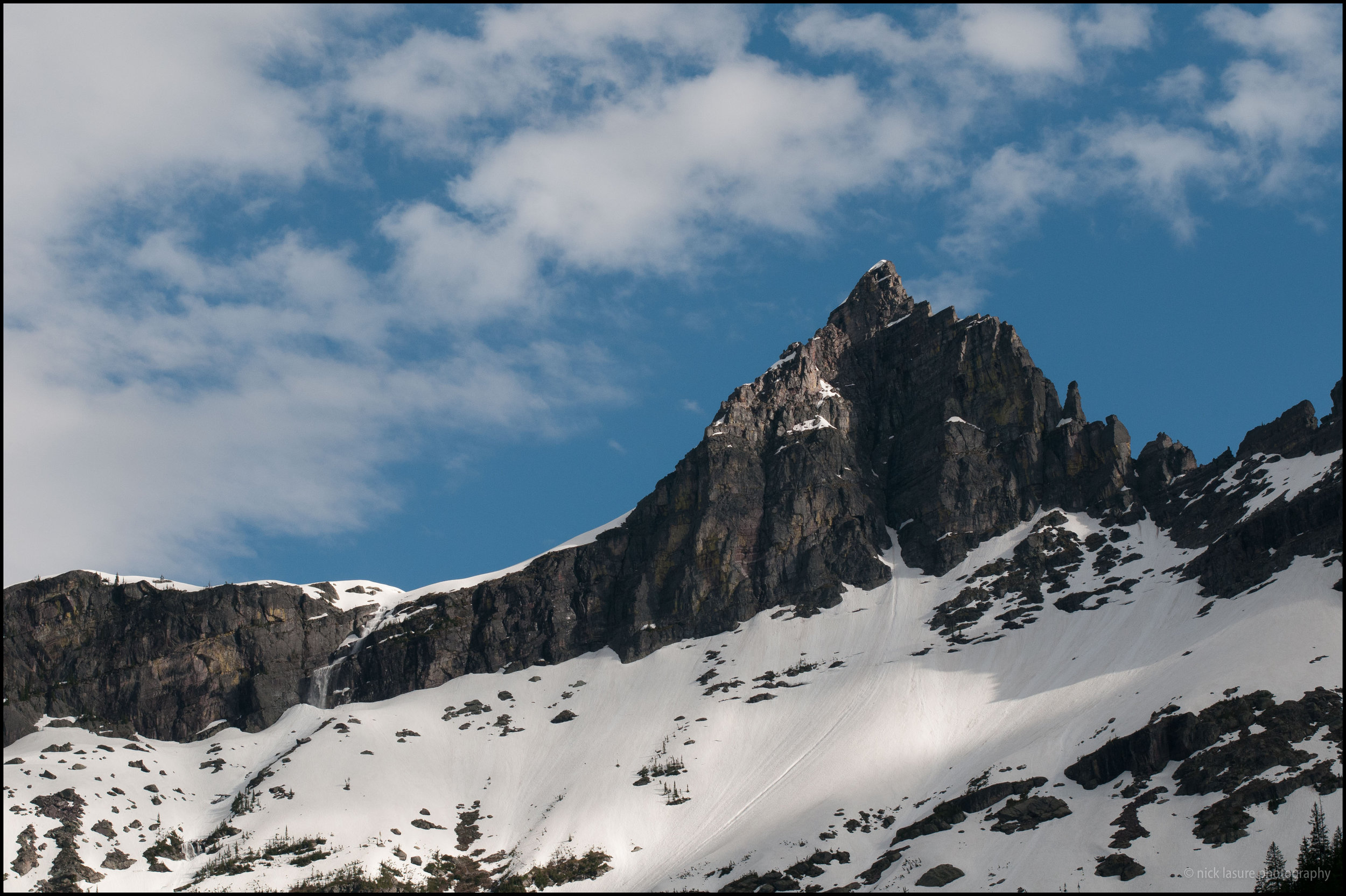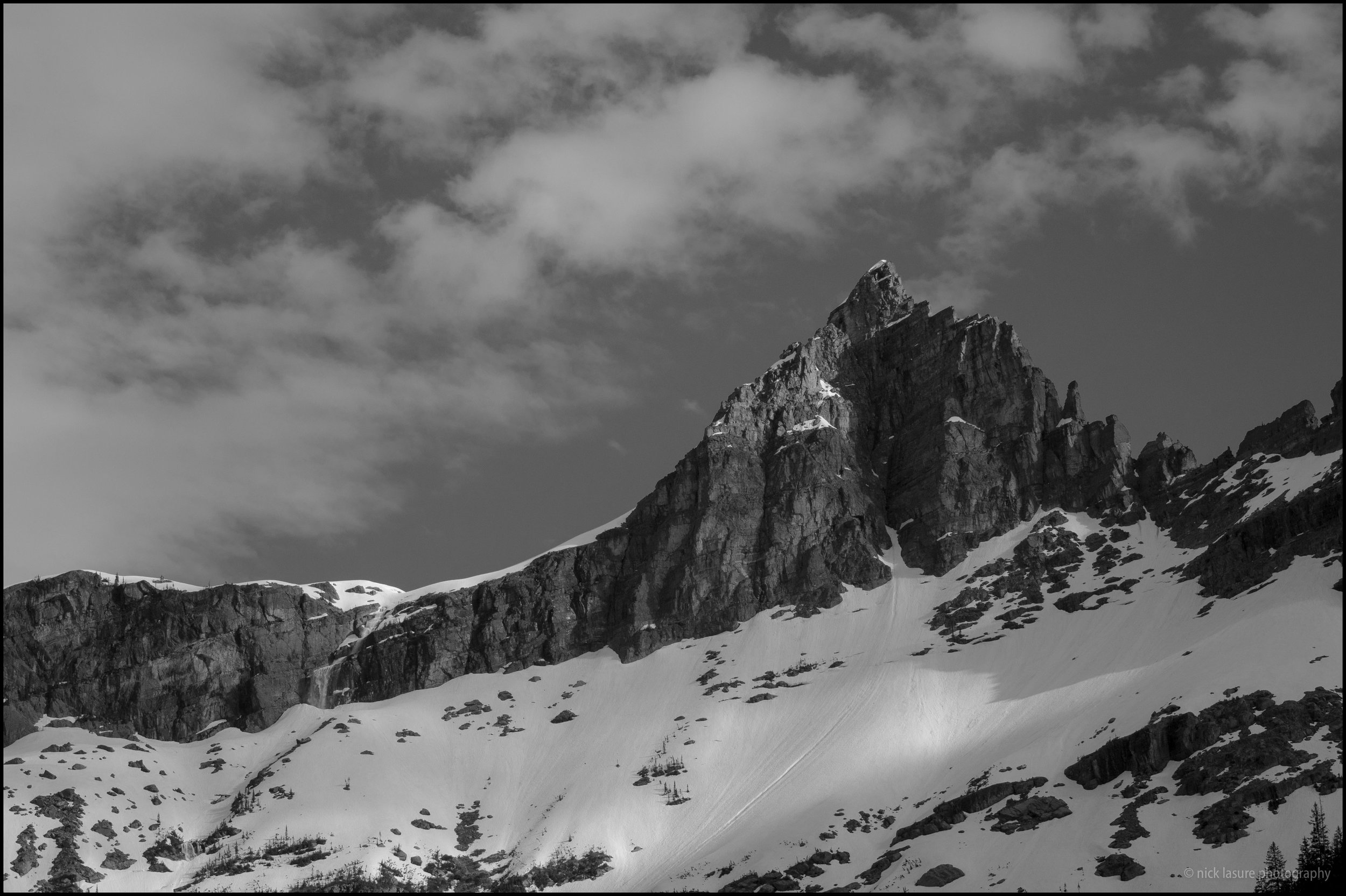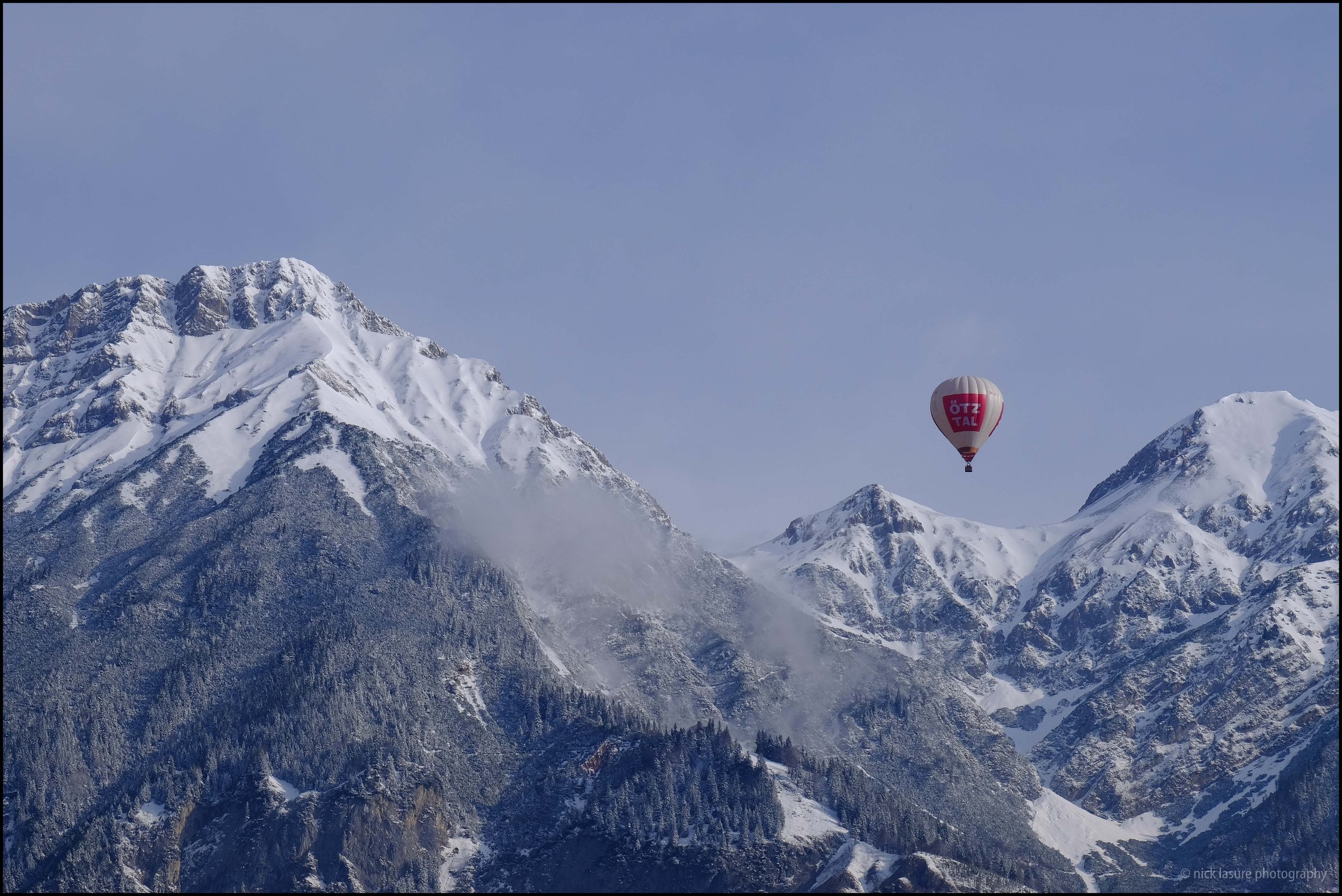Amsterdam at night is always beautiful; lights from a passing boat, the moon, passing bicycles & cars and even the subtle glow from the famous red lights from across the canal make for a wonderful scene.
Sleeklens Presets Review
I was recently given the opportunity to test & review some handy Lightroom presets from the nice folks over at Sleeklens. If you use Lightroom much you are probably familiar with the usefulness of presets. Though it's nice to have handy one-click editing at your fingertips, I always consider presets to be a starting point and not a finishing point. This is where presets such as those offered by Sleeklens can come in handy.
How I Create & Edit Images
Before we delve into the before & afters, a quick primer on how I shoot & edit might be handy. I'm of the school of thought that getting the image right in the first place is the best starting point in making good images. Though the camera's sensor and human eye never see the same scene as it was. Digital images often need updated [edited] to do the scene justice as your eye saw it.
So when I do use presets they are 'primers' or 'starters' then I fine tune the image with Lightroom's individual controls as I go along. The nice thing about Sleeklens' offering is that it is built as a 'layered' system to editing in Lightroom that others don't accomplish. So there can be less 'right panel' editing and quicker 'left panel' edits to achieve a similar result.
Not Just Another Preset
As I mentioned above, Sleeklens presets use a sort of building block or layering method. While their presets also come with 'all-in-one' clicks that you might be used to the stackable options are a different approach. I won't explain how that works in detail as they have put together a short video on exactly how it works, but you can see some examples I used below.
The other handy thing I really enjoyed using are the brush presets, which handily also function in the gradient tool. While you can always customize your brush settings to your heart's content having quick presets in the brush & gradient menu can speed up your workflow.
Alright, enough chatter - let's get into some before & after images to see what these presets are all about.
Before/After #1 - This was an image from McWay Falls in Big Sur, California. The image on the left was SOOC from my Fuji X-T1 as a JPEG with a 10 second exposure. For this edit I decided to show what the all-in-one preset can do with no further touches. This was the Calm Sunset preset from the Through the Woods landscape collection. I really like the warm tones and clarity the preset gave the image.
Before/After #2 - This image is from Glacier National Park in Montana. Taken with my old Nikon D300 the original file was a RAW file (NEF) with good exposure. Though I thought it might look better as a black & white image with a few adjustments. So I used the layering/stacking method with the following presets in this order: (1) Base - Monochrome Fantasy (2) Exposure - Less Highlights (5) Polish - Less Contrast (6) Vignette - Subtle Black.
Before/After #3 - The final image was taken from our balcony in Innsbruck, Austria while on holiday. Once again, the first image was well exposed from my Fuji X-T1 and another SOOC JPEG. I utilized the entire suite of options from the 'Through the Woods' landscape preset offering to include local brush adjustment presets. (1) Base - Cinematic (2) Exposure - Less Highlights (3) Color Correct - Reduce Yellows (4) Tone/Tint - Warm (5) Polish - Sharpen (6) Vignette - Subtle Black + Bright Shadows Adjustment Brush on the ballon and Darken Shadows Brush on the mountains.
Conclusion - Presets Worth the Investment?
So in the end are presets like what Sleeklens offer worth your hard earned money? Absolutely, but with a few caveats you should consider.
Preset packages tend to come with lots of looks/options some of which are superfluous or overkill for some photographer's editing needs, this package included. With so much at your fingertips it is easy to over-edit your images or just get lost in the editing process. If you know your way around Lightroom and have your own style chances are flooding your presets menu with more options isn't for you.
That said, presets tend to help photographers develop their style, help work through editing mental blocks and can be useful in learning how to edit as you can see the changes that happen.
While presets can be a dime a dozen the Sleeklens offering is different enough in the building block/layering methodology to offer something unique. While I'll remove certain presets & brush/gradient options I'll definitely keep a lot of it around for future use. If you are in the market for presets I'd definitely give them a solid look.
https://sleeklens.com/product-category/lightroom-presets/
https://sleeklens.com/lightroom-tutorials/
*disclaimer - I did receive the presets free in exchange for an honest review.
Search for the Ultimate Travel Camera
Ahh, the mythical and often sought ultimate 'travel' camera. Is it a myth or reality? If you are ready to join me, I'm about to go down the rabbit hole in search of the best travel camera for my needs. And who knows, maybe your needs too as I happen to be in the market to replace my older Nikon P7000 and Sigma DP1s point & shoot cameras. The timing for this adventure in specs & details couldn't be better.
So why am I in the market for a new travel camera? As I've mentioned previously I'm an airline pilot and of course travel on a weekly basis. I usually keep one of the aforementioned smaller point & shoot cameras in my messenger bag for a general walk around camera as I'm exploring various locales each week. On trips where I intend to do more 'serious' shooting I'll of course bring the much more capable & amazing Fuji X-T1 along with the rest of my kit (tripod, filters, lenses, etc.) but I do enjoy having a high quality compact camera with me at all times.
The impetus to move forward with finding a new camera came a few weeks back from a licensing inquiry. Last year I snapped the image below with my much loved but also despised at times Sigma DP1s in Devils Lake, North Dakota. The client desired a larger version of the picture but I had already cropped it from the maximum file size that the DP1s produces (2652x1768 pixels). Thus the best I could do was upsize it in Photoshop with decent result. After that request I realized I needed a much more capable camera for my weekly travels as I do happen upon portfolio & large print worthy shots from time to time.
A cold sunset in Devils Lake, ND | Sigma DP1s
Travel Camera Defined
So before we proceed, we should define what exactly constitutes a 'travel' camera. Opinions will of course vary for many photographers, as anything from a larger DLSR to a mirrorless ILC to a smart phone might be the answer for some. For me a 'travel' camera is defined as a compact, fixed lens, high image quality capable camera that can be easily tossed in your daily bag or jacket pocket without trouble. If you are bringing multiple lenses or need a separate camera bag that defeats the purpose of a true travel camera. While budget constraints will affect the ultimate selection, I'm going for the higher end $700 - $1,200 point & shoot cameras that will meet my own performance, quality & printability needs.
Along with my general description above, I'm also looking for the following key aspects in said camera: excellent image quality & large sensor, good ISO performance, wide'ish angle lens for landscapes, fast lens (f/2.8 or faster), tilt screen, rugged build, external controls, built in ND filter a plus, decent macro, and perhaps limited zoom though a single focal length is just fine.
Things that I'm not looking for in my quest for the ultimate travel camera are as follows: mega zoom range (lame), interchangeable lenses, bulky design, fancy automated shooting modes (give me manual control!) or video capabilities.
For comparison sake an image from the Nikon P7000 - Keeping an eye on the storm from 32,000 feet | Nikon Coolpix P7000
The Contenders
So, which cameras fit into my definition?
I'm currently researching five different cameras from 4 different manufacturers. The soon to be released Nikon DL 18-50, Fuji X70, Fuji X100T, Panasonic Lumix DMC-LX100 and the Sony DSC-RX100 IV. Each camera has its strength & weaknesses which I'll attempt to briefly highlight below so as to not write a novel.
The 5 choices left to right - Nikon DL 18-50, Fuji X70, Fuji X100T, Lumix DMC-LX100 & Sony RX100 IV. Photo credits to respective manufactures.
Nikon DL 18-50 - MSRP $850 - as a current Nikon shooter (and former Nikon DSLR shooter) I'm actually quite excited about this camera. Although Nikon are a bit late to the game in introducing larger sensors in compact cameras, they seemingly have a great offering here. The DL 18-50 (uninspiring name btw) hasn't been released yet so I'm a bit hesitant to pull the trigger before some extensive reviews are out there. Or better yet, I get my own hands on it!
Pros: good zoom range without being ridiculous, wide aperture throughout focal length, 20.8 MP backlit sensor, image stabilization, good ISO performance, compact size, touch/tilt screen
Cons: new camera with limited reviews, Nikon smart phone app gets bad reviews, no flash or viewfinder
(quick note - to make matters even slightly more confusing I'm adding the Nikon DL 24-85 for consideration due to its macro capability, specs otherwise are the same as the DL 18-50 though of course not quite as wide)
Fuji X70 - MSRP $700 - as a current Fuji owner the immediate familiarity with this or the X100T make both cameras leading contenders. I absolutely love the images my X-T1 produces with that classic Fuji look and both cameras will produce great results with the X-Trans sensors. The compact size of the X70 makes it very attractive indeed. Though similar to the Nikons above, it is a new release as of February 2016 so not many reviews out there just yet. However I'll be renting one next week to see what I think.
Pros: compact size, budget friendly, same 16.3MP APS-C X-Trans sensor as more expensive Fuji options, touch/tilt screen, 18.5mm lens (28mm equiv) is great for landscapes, actual aperture/shutter/EV dials, digital crop feature to increase reach of lens (unsure of quality though), hybrid autofocus
Cons: no image stabilization, no built in ND filter, no optical viewfinder, 2nd smallest resolution size of the five, max aperture of f/2.8 not the widest but overall good
Fuji X100T - MSRP $1,300 - honestly this is probably the leading contender right now, though the price tag is higher than I was hoping to spend for a walk around/travel camera. The X100T has many features I'm looking for and yet it isn't the equivalent of my X-T1 nor is it 'too much' as the XPRO-2 would be for my weekly travel needs. With the rumored Fuji X-T2 also coming out in the fall, I shouldn't go overboard for a travel camera either as I'll be picking up the X-T2.
Pros: basically an XT-10 (not quite X-T1) wrapped in a compact body, great ISO range, fast lens with quality Fuji optics, built in ND filter, good resolution, 35mm focal length
Cons: largest camera among the five, no image stabilization, rumored replacement forthcoming in the fall (see below for thoughts), no tilting LCD screen, expensive but currently around $1,000USD
Panasonic Lumix DMC-LX100 - MSRP $800 - this camera has been a favorite among many photographers and offers many great characteristics. My main hesitation in purchasing it is that most likely Panasonic will release a new version this fall. I don't want buyer's remorse later on, especially after a likely price drop after the replacement is announced.
Pros: good image quality, zoom range, 24-75mm, large sensor, good autofocus, good battery life, manual controls, good deals to be had right now
Cons: replacement due fairly soon, reported lens flare issues, no tilting LCD screen, smallest max resolution of the five
Sony DSC-RX100 IV - MSRP $950 - another fan favorite, the Mark IV RX100 has won over many photographers. Its very compact size with respect to image quality is enticing to be sure. Though it lacks the external controls for quick adjustments which is a turn off. And while I don't need a camera to look 'sexy' it lacks the retro look that so many others have launched of late that I am honestly smitten with.
Pros: Zeiss f/1.8-2.8 lens, 20.1 MP 'stacked' sensor, tilting LCD, built in ND filter, responsive, truly pocketable
Cons: lacks the retro look & no external dials for quick adjustments, very particular about SD card type (bad when traveling perhaps if other cards fail), short battery life
Ok, So Now What?
One final option would be to simply purchase the Fuji 18mm f/2.0 pancake lens, slap it on my X-T1 and always have that with me. Though there are a handful of issues with that approach:
- I prefer having a good camera for my wife to shoot with when we travel together. She has captured some amazing images, so having a good camera in her capable hands is always smart.
- I don't want my primary camera to get unnecessary wear & tear each week.
- I'll also bring two cameras when out by myself in case one fails or the other is busy doing a time-lapse for instance.
- Slapping the 18mm on and calling it a day with would defeat the entire purpose of this post ;)
So there you have it! Over the next month or two I'm going to do a handful of rentals, hit the camera store and attempt to find my ultimate travel camera. Though I realize there is probably no such thing, I believe one of these will be a very good fit with few compromises. I'll plan to report back with my choice and will give a full breakdown of its performance.
So what do you think? Am I on the right track? Have you shot or do you own any of these cameras? Did I miss any? Please feel free to comment below on what you think might be your choice for ultimate travel camera.
Montana & My Fuji
A few weeks back as I sipped my coffee driving east toward a sunrise location on the snowy backroads of Montana I came to sudden realization. I was about to celebrate one year of making images with my Fuji X-T1. The last year of making images with my new camera system has been a bit of a revolution and creative awakening. As I've mentioned before, I was a bit nervous about switching camera systems from the more traditional digital Nikon DSLR that I had been shooting for a decade. It had served me well, but the bulk and heavier weight were starting to wear me down for my travels. As I started to research lighter weight systems I realized the mirrorless technology has come a long way and performance specs were up to snuff with DSLR for a fraction of the weight and bulk.
This last year has proven I can get the images I want with a far more portable and lighter system. In fact, for this trip to Montana I didn't even carry a camera bag. I simply put my Fuji XT-1, Fuji 18-135mm and Rokinon 12mm lenses in my standard Timbuk2 messenger and called it a day. My tripod fits nicely into my standard rollerboard bag and a few other accessories such as filters, extra battery & charger fit easily as well.
My Fuji XT-1, filters & accessories fit nicely in my daily messenger.
Tripod, filters, charger & accessories snugly fit into my rollerboard bag.
I usually carry a small point & shoot (Nikon or Sigma) with me each week when I travel, but I've realized I can easily throw the much more capable XT1 with a single lens in my bag instead for virtually the same amount of space. Though it isn't quite the 'everyday carry' camera either. I'm looking forward to another big year traveling with my Fuji system and making some great images. Have you changed your camera system or thinking about it? Comment below and let me know what you think!
Barren
Photo Lego Dude checking out the surrounds.
Goodnight to a hazy Helena.





